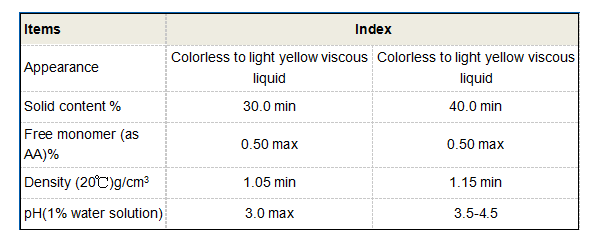anionic pam
Understanding Anionic Polyacrylamide (PAM) Applications and Benefits
Anionic polyacrylamide (PAM) is a widely utilized polymer in various industries due to its versatility and effectiveness in different applications. Its chemical structure consists of repeating acrylamide units with negatively charged anionic groups, which make it particularly useful in processes that require flocculation, sedimentation, and other forms of separation. This article explores the characteristics, applications, and benefits of anionic PAM in multiple sectors.
Characteristics of Anionic PAM
Anionic PAM is a linear polymer known for its high molecular weight, which can range from several hundred thousand to millions of Daltons. This high molecular weight contributes to its ability to improve the physical properties of various substances. The negative charge of the polymer facilitates its interaction with positively charged particles, such as sludge and various minerals. This property enhances the efficiency of separation processes, making anionic PAM a valuable tool in water treatment, mining, and agriculture.
One of the main attributes of anionic PAM is its solubility in water. When added to aqueous solutions, it dissolves rapidly, forming a viscous solution that can interact effectively with suspended particles. This water solubility is crucial for its application as a flocculant, where it helps aggregate fine particles, leading to improved clarity in water and better overall performance in various processing operations.
Applications of Anionic PAM
1. Water Treatment Anionic PAM is extensively used in municipal and industrial water treatment processes. It functions as a flocculant that helps remove suspended solids, colloids, and other impurities from wastewater. By promoting the agglomeration of particles, it enhances the efficiency of gravity sedimentation processes, resulting in clarified water.
2. Mining In the mining industry, anionic PAM plays a critical role in mineral processing. It aids in the flotation of minerals and improves the separation of valuable ores from waste materials. The polymer's ability to bind with various metal ions enhances the recovery rates, making mining operations more economically efficient.
anionic pam

3. Agriculture Anionic PAM is increasingly being recognized in agricultural practices, particularly in soil erosion control and water retention. When applied to soil, it improves soil structure, reduces erosion by wind and water, and increases water infiltration. This results in less runoff and better moisture retention, which is especially beneficial in arid regions.
4. Paper Industry In paper manufacturing, anionic PAM is utilized as a retention aid. It helps in the retention of fillers and fibers during the papermaking process, ultimately leading to improved paper quality and reduced waste.
Benefits of Anionic PAM
The use of anionic PAM offers several significant benefits across various applications. One of the primary advantages is its effectiveness in reducing operational costs. By improving the efficiency of processes such as water treatment and mineral recovery, industries can save on energy and chemical usage, making their operations more sustainable.
Moreover, anionic PAM is relatively easy to handle and apply. It can be used in both powder and liquid forms, allowing for flexible application methods. This convenience, combined with its effectiveness, makes it a popular choice among engineers and operators in different fields.
Furthermore, the environmental benefits of using anionic PAM cannot be overstated. By facilitating better separation and treatment of waste materials, it contributes to cleaner water bodies and reduces the environmental impact of industrial operations.
Conclusion
Anionic polyacrylamide is a powerful polymer that has found its place in numerous industries due to its exceptional properties and benefits. From enhancing water treatment processes to improving agricultural practices and mineral recovery, its applications are extensive and impactful. As industries continue to seek more efficient and sustainable practices, anionic PAM will likely play an increasingly important role in shaping a cleaner and more efficient future.
-
Water Treatment with Flocculant Water TreatmentNewsJun.12,2025
-
Polymaleic AnhydrideNewsJun.12,2025
-
Polyaspartic AcidNewsJun.12,2025
-
Enhance Industrial Processes with IsothiazolinonesNewsJun.12,2025
-
Enhance Industrial Processes with PBTCA SolutionsNewsJun.12,2025
-
Dodecyldimethylbenzylammonium Chloride SolutionsNewsJun.12,2025





